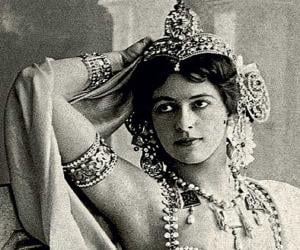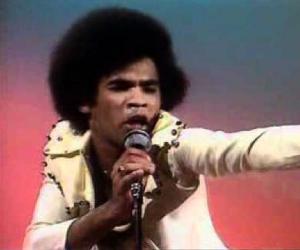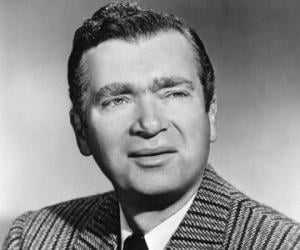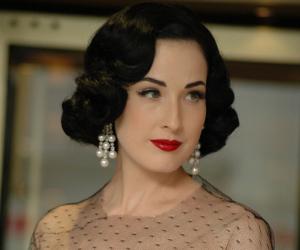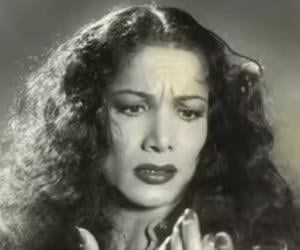Quick Facts
Also Known As: Margaretha Geertruida Zelle
Died At Age: 41
Family:
Spouse/Ex-: Rudolf John MacLeod (m. 1895–1907)
father: Adam Zelle
mother: Antje van der Meulen
children: Louise Jeanne, Norman-John
Dancers Dutch Women
Died on: October 15, 1917
place of death: Vincennes, France
Cause of Death: Execution By Firing Squad
Childhood & Early Life
Born as Margaretha Geertruida Zelle, Mata Hari was the eldest child of Adam Zelle and his first wife Antje van der Meulen.
Her father divorced her mother in 1889. Her mother passed away in 1891 and on February 9, 1893 her father got married to Susanna Catharina ten Hoove.
She was sent to live with her godfather in Sneek, where she was trained to become a kindergarten teacher, but later went to live with her uncle in The Hague.
Career
After a disastrous marital life in the Dutch East Indies (present-day Indonesia), she moved to Paris in 1903. She became a friend of a French diplomat, who told her to pick dancing for a livelihood.
With her exotic oriental looks, she started her dancing career in a salon. Her stay in Indonesia had helped her perfect the style of an oriental dancer and seductress and she was not shy of exposing her body.
She posed for artists, scantily-clad, while her sensuous dance moves captivated the audiences. Soon, she started gaining popularity and became friends with high-ranking men of her time.
However, by 1910 her career in dancing began to decline as young dancers began to surface and replace her. In order to maintain her lifestyle she turned into a courtesan and for a long time she depended on this profession as a source of her income.
During World War I, at the age of forty, she used to frequently travel between France and the Netherlands. She would usually travel through Britain and Spain and her journeys aroused a lot of suspicion.
Soon, she was tagged as a German spy and even a double-agent working both for Germany and France. By now, her infamy as a spy grew and the French, who believed she was a German secret agent, arrested her on February 13, 1917 at Hotel Elysee Palace.
She was found guilty of espionage on July 24 and on October 15, 1917, at the age of 41, after several trials, she was executed by the firing squad.
Personal Life & Legacy
She married Dutch Colonial Army Captain Rudolf MacLeod on July 11, 1895, at the age of 19 – her husband was 21 years older to her. She moved to Indonesia with her husband where she gave birth to two children, Norman-John MacLeod and Louise Jeanne MacLeod.
Not long after their marriage, problems began to surface owing to MacLeod’s alcoholism and abusive nature. He also had a relationship with a concubine, common in those days in Indonesia. Distraught by her husband’s infidelity, she left his side and temporarily moved-in with a Dutch officer Van Rheedes.
MacLeod requested her to come back but she found that her husband had not changed. In 1899, both of her children fell seriously ill as they had contracted syphilis. Her son Norman could not survive and passed away, but her daughter survived. In 1907, the couple got divorced.
Even long after her death, many people are keenly interested in knowing about Mata Hari’s life and especially her execution as there is still a lot of mystery and speculations involving her job as a spy.
A number of films have been made on her life, a good number of books have been written and many songs have also been composed in her name.
The Fries Museum in Leeuwarden, Netherlands, has a room dedicated to Mata Hari where her scrapbooks have been kept along with an embroidered carpet which has the footsteps of her fan dance.
Facts About Mata Hari
Mata Hari was known for her exotic dances and captivating performances that mesmerized audiences in Europe during the early 20th century.
She was a skilled linguist who spoke several languages fluently, which helped her in her espionage activities during World War I.
Mata Hari was a free-spirited and independent woman who defied societal norms of her time, choosing to live life on her own terms.
Despite the controversy surrounding her, Mata Hari remains a fascinating figure in history, inspiring countless books, films, and artworks based on her life.
She exhibited courage and resilience in the face of adversity, facing her fate with dignity and grace during her trial and execution.


